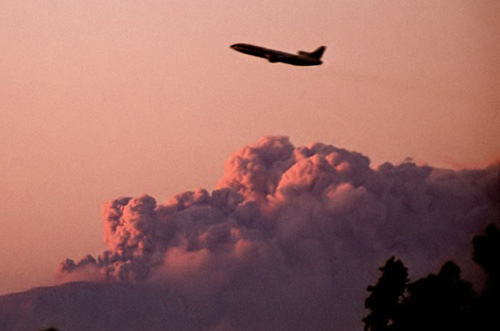
New research funded by the Natural Hazard Commission (NHC) has found hundreds of thousands of North Island homes could be covered in ashfall following a volcanic eruption.
The NHC’s research project aims to fill a gap between the existing internationally developed models and local New Zealand post-eruption data collection.
This will help authorities quickly assess damage from volcanic ashfall during and after an eruption.
The research team consists of GNS, the University of Canterbury and Nanyang Technological University in Singapore.
The team is developing the modeling approach, and the two-year project is expected to complete the new modeling tool by the end of 2025.
Josh Hayes, a Natural Hazard and Risk scientist at GNS who led the research, says a volcanic eruption could affect thousands of buildings around the North Island.
NZ needs a model that can provide a quick assessment of the scale of damage from a volcanic eruption, he says.
Creating a damage forecasting model will be “hugely beneficial” for authorities and communities to concentrate resources.
“We have not had any major ashfall since Mt Ruapehu erupted in 1995 and 1996, and that didn’t cause that much damage, so our understanding of the effects is highly informed by overseas experiences,” Hayes says.
“We will use existing overseas damage forecasting models, but will calibrate those models with specific New Zealand data rapidly following an eruption.”
Hayes says a rapid modeling tool that is able to be adjusted with fresh data will be critical if a volcano enters a prolonged eruptive episode with ongoing ashfall events.
The model the team are working on will use scientific data, engineering reports and satellite images and crowd-sourced data – like social media – to build a comprehensive picture after an eruption.
The Earthquake Commission (EQC) became the NHC in July of this year, in order to be better prepared when it comes to recovering from a range of natural hazards, not just earthquakes.
The change is part of the new Natural Hazards Insurance Act which became effective from 1st of July.
It is aimed at representing the broad spectrum of natural hazards covered by the Commission, including tsunami, landslides, volcanic activity, earthquakes, and geothermal events.
12 Comments
This is a great idea.
incoming premium rises in 3. 2. 1...
Was in Rotorua during the 96 one. Killed some fish, damaged your car paint if you didn't wash if off quickly, stopped recreational access to the mountain to the and disrupted a bunch of flights. Other than that not a big deal.
The Natural Hazards Commission?
Another QUANGO or assembly of government 'consultants' paid handsomely by the long-suffering taxpayer.
As the story notes;
The Earthquake Commission (EQC) became the NHC in July of this year, in order to be better prepared when it comes to recovering from a range of natural hazards, not just earthquakes.
The change is part of the new Natural Hazards Insurance Act which became effective from 1st of July.
It is aimed at representing the broad spectrum of natural hazards covered by the Commission, including tsunami, landslides, volcanic activity, earthquakes, and geothermal events.
This is probably a underappreciated risk, especially around Taranaki and Auckland.
Prevailing winds are likely to keep ashfall from ruapehu away from Taranaki. Bigger issue is their own mountain, historically a much more volatile volcano.
a great watch for those interested. https://www.youtube.com/watch?v=GljllvKlTac
Not many realise that the current iteration of Mt Taranaki is 1,000 years younger than the great pyrami of Giza.
The good news is that by all accounts an asteroid is not expected to collide with earth for another 100years; but after that all bets are off.
A more realistic propect is an earthquake caused by the sudden and violent release of energy after a 'snagged' section of the the Pacific tectonic plate is suddenly freed from said snag to resume its normal subduction under the Australian plate. Depending on where such a 'snag' occurs the nearest part of the low-lying eastern sea-board of NZ is at risk of being swamped by a giant tsunami.
[Comment removed. You obviously missed this. Ed ]
Another government quango looking for work trying to reinvent the wheel by using "modern terminology" like crowd sourced data and social media.
Rather than looking up, the answers will be at their feet. Our soils are derived from numerous ash falls over thousands of years and they paint a pretty precise picture of what happens during an eruption, and they ve been well mapped.
The 95 eruption of Ruapehu caught NZ with its pants down. There was no information about actions people could/should take when ash settled. MAF Policy in Hastings put together a flier to fill that gap.
Hopefully one outcome of this project will inform the population on managing through ash fall.
There are benefits from ash as well. In 1996 (I think) it was calculated that ash accumulation on the Ruataniwha Plains deposited the equivalent of 3 years fertiliser sulfur application to the soils. But on the other hand expert knowledge assured no or negligible fluorine content (in the ash) which was wrong as stock losses on central plateau demonstrated.
The Tongariro power scheme also learnt a painful lesson about just how abrasive ash is, with massively accelerated wear in the system.
There was a real boost to trout size and condition after numbers were knocked back so much that there was way less competition for food in the lake.

We welcome your comments below. If you are not already registered, please register to comment.
Remember we welcome robust, respectful and insightful debate. We don't welcome abusive or defamatory comments and will de-register those repeatedly making such comments. Our current comment policy is here.